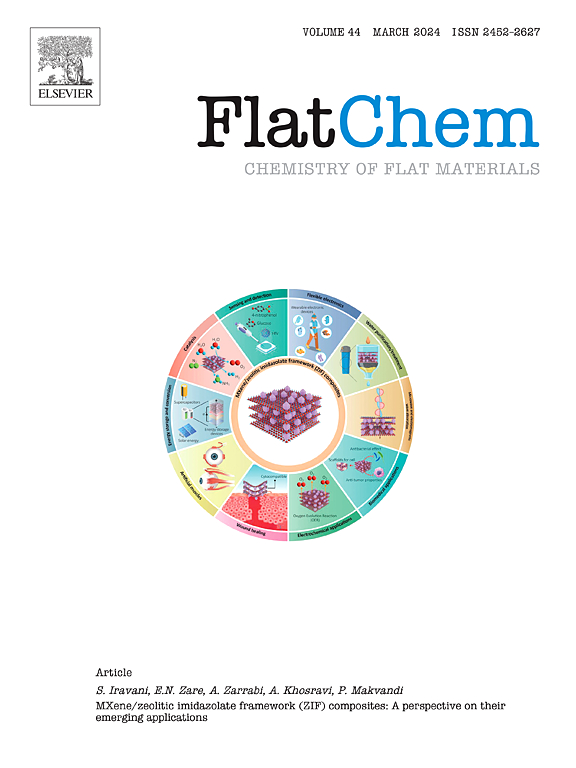Graphene-enhanced polymer composites: A state-of-the-art perspective on applications
IF 6.2
3区 材料科学
Q2 CHEMISTRY, PHYSICAL
引用次数: 0
Abstract
Graphene-reinforced polymer composites (GRPCs) have evolved into a cutting-edge class of materials with remarkable physicochemical and thermomechanical properties. These composites offer a viable alternative to traditional materials with multifaceted applications. While existing studies have focused on specific polymer matrices and applications, there remains a lack of comprehensive analysis that integrates recent advancements in both thermosetting and thermoplastic polymers with an emphasis on their multifunctional properties. Therefore, the present review extensively focused on the state-of-the-art in the fabrication of GRPCs covering a wide range of thermosetting and thermoplastic polymer matrices. Several functionalization methods of graphene including covalent and non-covalent approaches were explored to enhance its compatibility and dispersion within the polymer matrices for enhanced properties. Recent advances in fabrication strategies which are crucial for enhancing interfacial bonding and preserving the intrinsic properties of graphene for optimizing the overall performance of the composite, are thoroughly discussed. Furthermore, several applications have been comprehensively explored in various sectors which lies due to the superior performance, higher sensitivity, and enhanced durability. In addition, this review critically discusses the environmental impact and sustainability related to GRPCs along with their challenges in the development and potential to revolutionize material design. This review offers a thorough overview of the latest advancements in GRPCs, bridging existing knowledge gaps and serving as a valuable asset for driving innovation across industries and promoting the growth of human civilization.

石墨烯增强聚合物复合材料:最先进的应用前景
石墨烯增强聚合物复合材料(grpc)已发展成为一类具有卓越的物理化学和热机械性能的前沿材料。这些复合材料提供了一个可行的替代传统材料,具有多方面的应用。虽然现有的研究主要集中在特定的聚合物基质和应用上,但仍然缺乏综合分析,将热固性和热塑性聚合物的最新进展与强调其多功能特性相结合。因此,本综述广泛地关注了grpc的制造技术,涵盖了广泛的热固性和热塑性聚合物基体。探讨了几种石墨烯功能化方法,包括共价和非共价方法,以增强其在聚合物基体中的相容性和分散性,从而增强其性能。本文深入讨论了最近在增强界面键合和保持石墨烯固有特性以优化复合材料整体性能的制造策略方面取得的进展。此外,由于优越的性能,更高的灵敏度和增强的耐用性,在各个领域已经全面探索了几种应用。此外,本文还批判性地讨论了与grpc相关的环境影响和可持续性,以及它们在发展中的挑战和材料设计革命的潜力。本综述全面概述了grpc的最新进展,弥合了现有的知识空白,为推动各行业创新、促进人类文明发展提供了宝贵的财富。
本文章由计算机程序翻译,如有差异,请以英文原文为准。
求助全文
约1分钟内获得全文
求助全文
来源期刊

FlatChem
Multiple-
CiteScore
8.40
自引率
6.50%
发文量
104
审稿时长
26 days
期刊介绍:
FlatChem - Chemistry of Flat Materials, a new voice in the community, publishes original and significant, cutting-edge research related to the chemistry of graphene and related 2D & layered materials. The overall aim of the journal is to combine the chemistry and applications of these materials, where the submission of communications, full papers, and concepts should contain chemistry in a materials context, which can be both experimental and/or theoretical. In addition to original research articles, FlatChem also offers reviews, minireviews, highlights and perspectives on the future of this research area with the scientific leaders in fields related to Flat Materials. Topics of interest include, but are not limited to, the following: -Design, synthesis, applications and investigation of graphene, graphene related materials and other 2D & layered materials (for example Silicene, Germanene, Phosphorene, MXenes, Boron nitride, Transition metal dichalcogenides) -Characterization of these materials using all forms of spectroscopy and microscopy techniques -Chemical modification or functionalization and dispersion of these materials, as well as interactions with other materials -Exploring the surface chemistry of these materials for applications in: Sensors or detectors in electrochemical/Lab on a Chip devices, Composite materials, Membranes, Environment technology, Catalysis for energy storage and conversion (for example fuel cells, supercapacitors, batteries, hydrogen storage), Biomedical technology (drug delivery, biosensing, bioimaging)
 求助内容:
求助内容: 应助结果提醒方式:
应助结果提醒方式:


